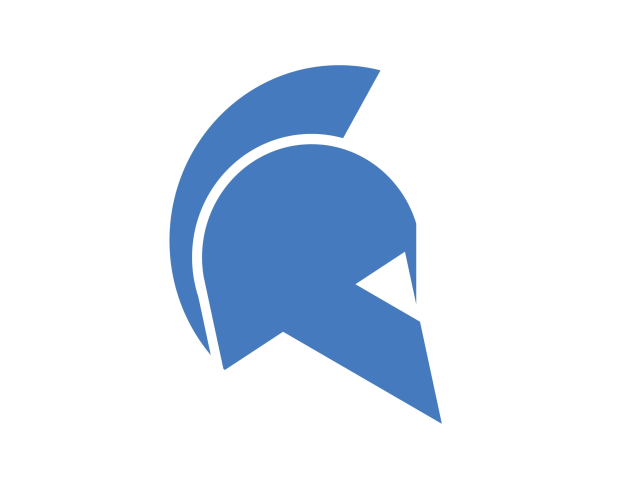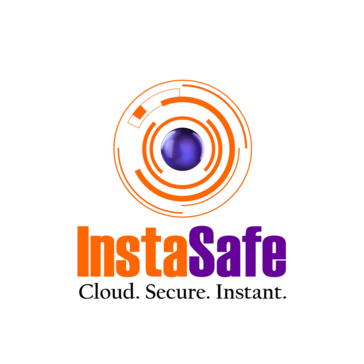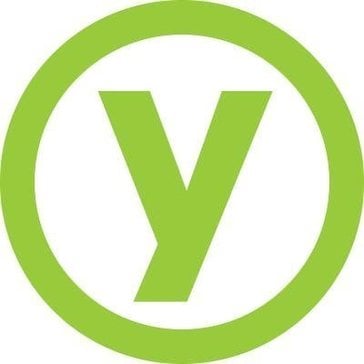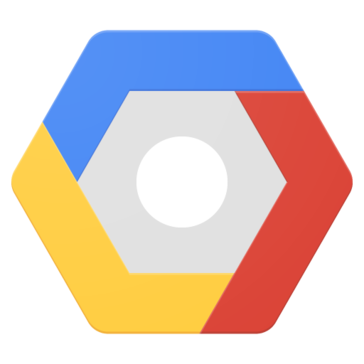Today’s Multi-Factor Authentication (MFA) Softwares are incredibly versatile, and because of strong competition, have remained a relatively low-cost investment for most.
Currently, with dozens of options available for Multi-Factor Authentication (MFA) Software in the market – finding the right Multi-Factor Authentication (MFA) Software of 2024 can be tricky.
So we spent dozens of hours researching and testing everyone we could get my hands on.
Based on our experience with the apps, here are 10 Best Multi-Factor Authentication (MFA) Software. Click on any app to learn more about why we chose it, or keep reading for more context on Multi-Factor Authentication (MFA) Software.
On this page, you’ll learn about the following:
What is Multi-Factor Authentication (MFA) Software?
Authentication with many factors Before giving access to accounts, sensitive information systems, or applications, MFA software requires users to authenticate their identity in two or more methods. Users are required to give a second authentication factor in addition to a single authentication factor such as entering a username and password to confirm that they are who they say they are. One-time passcodes (OTPs) for SMS, email, or phone calls, software tokens (small thumb drives or keycards), and mobile push on a software program to a mobile device are all examples of authentication elements. authentication based on biometrics and contextual or risk considerations MFA tools are used by businesses to verify that a user is who they say they are before granting access to protected information or applications. This software can assist businesses prevent internal theft and data loss, as well as unauthorized exterior access. Individuals who want to strengthen the security of their own devices or online accounts can employ MFA solutions. Risk-based authentication software is a type of multi-factor authentication that determines the user’s authentication and risk by considering factors such as the user’s geolocation, IP address, IP address reputation, time since last authentication, device posture, device management, and other factors. Passwordless authentication software is a type of MFA that does away with passwords as an authentication factor in favor of relying on additional factors to authenticate a user. MFA software can be sold as a standalone product that can be integrated with a company’s user accounts, or it can be sold as part of a compound solution, such as workforce-based identity and access management IAM software or customer-based customer identity amplification software. A product must use a secondary authentication mechanism such as OTPs, mobile push software token hardware token biometric elements, or more to qualify for inclusion in the Multi Factor Authentication MFA category. A user’s prompt authentication Allow for triggered multi-factor authentication for new users and devices.
Read More
10 Best Multi-Factor Authentication (MFA) Software
539 visited this site today
OneLogin simplifies identity management with secure, one-click access, for employees, customers and partners, through all device types, to all enterprise cloud and on-premises applications. OneLogin enables IT identity policy enforcement and instantly disables app access for employees who leave or change roles in real-time by removing them from Active Directory. Take control over application access, quickly on- and off-board team members, and provide end-users with easy access to all their applications on every device. Extend your on-premises security model to the cloud in minutes. Eliminate the pain and expense of extensive identity policy management. OneLogin reduces identity infrastructure costs and complex integration projects for each new app and efficiently extends identity policies to the cloud. OneLogin eliminates the need for lengthy integration and provisioning projects, manual de-provisioning, protracted on- and off-boarding processes, username and password resets, and Shadow IT.
Read More
Ensure users have convenient, secure access—from any device, anywhere—to the applications they need, whether in the cloud or on-premises. RSA SecurID Access is an enterprise-grade multi-factor authentication and access management solution that lets organizations consistently and centrally enforce dynamic risk-driven access policies aimed at providing continuous, seamless authentication. It protects all of your resources with a wide range of authentication methods, including push notification, biometrics, OTP, SMS, and traditional hardware and software tokens. .
Read More
Ping Identity (NYSE: PING) builds identity security for the global enterprise with an intelligent identity platform that offers comprehensive capabilities including single sign-on (SSO), multi-factor authentication (MFA), directory and more. Ping helps enterprises balance security and user experience for workforce, customer and partner identity types with a variety of cloud deployment options including identity-as-a-service (IDaaS), containerized software and more. Ping has solutions for both IT and developer teams. Visit www.pingidentity.com to learn more. .
Read More
BIO-key PortalGuard IDaaS is a cloud-based IAM platform that offers options for multi-factor authentication (MFA), biometrics, single sign-on, and self-service password reset to support a customer’s security initiatives and deliver an optimized user experience. For over 20 years, the vendor states industries such as education, including over 200 institutions, healthcare, finance, and government, have chosen PortalGuard as their preferred solution. Whether for passwordless workflows, support for a Zero Trust architecture, or just implementing MFA for the first time, PortalGuard is designed to secure access for both the workforce and customers, whether they are remote or on-premises. PortalGuard’s MFA offers Identity-Bound Biometrics that boasts the highest levels of integrity, security, accuracy, availability and ease of use over traditional authentication methods. The vendor states that with PortalGuard IDaaS, customers can consolidate their IAM solutions, eliminate passwords, simplify access for users, and reduce overhead. .
Read More
Login with your presence instead of passwords. Touchless, wireless, login to PCs, website, and software. Continuous authentication is stronger than traditional one-time 2FA login solutions. No more typing passwords – experience walking up to a PC and all your passwords auto-filling everywhere. Then when you walk away, the PC locks. Passwordless proximity login for everyone. No more forgotten passwords, password resets, password chaos, unattended and unlocked computers, and weak passwords. Auto-fill passwords on EHRs such as Allscripts PM, Allscripts Clinical Module, eClinicalWorks and more. Auto-fill web passwords such as your bank, Office365, purchasing sites, and more. Passwordless login for all your accounts using a wireless key. .
Read More
Salesforce Authenticator provides additional security with 2-step verification..
Read More
InstaSafe is redefining the challenge of secure access to modern networks by leveraging Zero Trust principles with its security solutions, that ensure seamless access to cloud applications, SAP applications, on-premise data, IoT devices, and multiple other neoteric use cases. Instasafe discards traditional VPN based conceptions of a network perimeter, instead moving the perimeter to the individual users and the devices they access. The Zero Trust approach followed by InstaSafe mandates a “never trust, always verify’ approach to privileged access, without focusing on network locality. InstaSafe ZTAA relies on continuously assessing the trust and risk associated with every user, and the context of their access request, and simultaneously employs a system of comprehensive authentication before grnating least privilege access. By only making authorised applications accessible to the user, and not exposing the network to these users, ZTAA serves to negate the exploitable attacks surface, and also eliminates the threat of insider attacks. In addition, ZTAA ensures that your security teams get complete visibility over all network activity for better identification and remediation of threat vectors. InstaSafe’s solutions work across multiple environments, providing access to data and applications hosted on premise or on any cloud. With its easy to deploy, hyperscalable functionality, you can configure ZTAA across your network with 5 simple steps, and ensure complete security and visibility for your workforce. .
Read More
Yubico YubiKey is a small USB and NFC device that support multiple authentication and cryptographic protocols it protects access to computers, networks, and online services for the organizations..
Read More
Enforce the use of security keys to help deter phishing.
Read More
The Auth0 Identity Platform, an independent product unit within Okta, takes a modern approach to identity and enables organizations to provide secure access to any application, for any user. Auth0 is a highly customizable platform that is as simple as development teams want, and as flexible as they need. Safeguarding billions of login transactions each month, Auth0 delivers convenience, privacy, and security so customers can focus on innovation. For more information, visit https://auth0.com..
Read More
What is the Best Multi-Factor Authentication (MFA) Software?
Here are our top picks for the Best Multi-Factor Authentication (MFA) Software to try this year.
How to Choose Best Multi-Factor Authentication (MFA) Software?
MFA is a powerful security tool for your organization, but it’s not always easy to choose the right one for your needs. With a wide variety of products and services available, choosing the right one for your business can be overwhelming. The following 7 tips will help you select the best MFA software for your organization. These tips will help you determine which product will provide the most secure MFA solution for your organization.
First, consider the risk posed by the digital access. Is it a bank account or shopping website or app? Or is it an order? If the latter is the case, multi-factor authentication makes sense. Regardless of the type of access, MFA is essential in securing your network, data, and internal identities. While passwords and security questions are still the least secure methods of authentication, they can be effective in certain scenarios.
Second, consider the risk involved in granting access to digital assets. Is it an online banking transaction? A secure shopping website or application that provides online access to financial information may not require additional authentication. However, if this is the case, MFA is a must. The highest level of authentication is biometric. In addition to passwords, security questions can also be used. For instance, if you want to add an extra step during the office hours or when you have restricted access to the network.
Finally, it’s important to choose an MFA software that enables you to control access to privileged accounts in your organization. Many MFA solutions don’t enforce MFA in all applications. While this is not a requirement, it’s a very useful feature for businesses. While some MFA software will force users to enter their passwords every time they log in to a system, many do not.
When it comes to security, MFA is a great choice for legal firms. MFA will allow you to secure accounts with an extra layer of protection. The best MFA software will require an extra factor to prove your identity. A third-party that can guess the password or username is not likely to be successful. This makes it essential for legal firms to protect their clients’ data. When using MFA, your organization can manage access to various areas of the site with ease.
The best MFA solution will offer a range of authentication methods. Popular methods include SMS text messages, push notifications, and authenticator apps. There are different deployment options, with both types offering their advantages and disadvantages. Some MFA solutions are on-premise while others are cloud-based. On-premise solutions are generally more secure than cloud-based ones, but be sure to compare the features and pricing before making a decision.
A good MFA solution should offer multiple authentication methods. MFA software should be flexible enough to accommodate the needs of your business. The software should also be flexible enough to support a range of security needs. Some of the most popular MFA solutions will offer basic functionality. Some may provide advanced options for your business. But many of them will also offer features that are specific to your industry. In addition to these features, MFA solutions should be customizable for your business’s unique requirements.
The MFA software that you choose should be flexible enough to integrate with your existing systems. For instance, you should be able to integrate your MFA solution with other applications you use. In addition to the MFA software, your company should also consider the user-friendly interface. You’ll be able to use it easily and quickly with its simple, intuitive interface. Once you’ve chosen the MFA, the next step is to evaluate the cost-effectiveness of the system.
The best multi-factor authentication software should provide comprehensive dashboards and reports for security and IT management. Ideally, the software should support both mobile and desktop applications. Some MFA software may not support multiple factors. While it is important to choose the right software for your organization, it’s vital to consider the type of MFA you need. When you are unsure of which MFA solution is right for your business, it’s important to do your research.
Read More
FAQ’s
Multi-Factor Authentication (MFA) is a type of software that is installed on your computer, tablet, or phone. MFA software is designed to add an extra layer of security to your online accounts. The software requires you to enter a code that it generates every time you log into your account.
Some of the more popular MFA software include Duo, FreeOTP and Google Authenticator. FreeOTP is open-source and free to use. Duo is a paid service, but they offer a free trial. Google Authenticator is free and is available on Android and iOS.
I think it is. It’s just a matter of following the prompts. I’ve been using it for a while and it’s not hard.
It’s no secret that cyber-attacks are on the rise. So, it’s no wonder that we’re seeing a surge in the number of people using multi-factor authentication software. There are many different types of software that offer MFA, and the best one for you will depend on your needs.
MFA software is designed to identify an individual’s identity in the event of a security breach. MFA software is designed to verify the identity of an individual by requiring two or more factors to complete a transaction. There are many types of MFA software that can be used.
A lot of people use MFA software, but not everyone knows how to use it effectively. If you’re using MFA software, you should know how to use it to the fullest extent. Here are some pointers:-Create a backup of your MFA software before you start using it.
I know you want to use Multi-Factor Authentication (MFA) Software, thus we made this list of best Multi-Factor Authentication (MFA) Software. We also wrote about how to learn Multi-Factor Authentication (MFA) Software and how to install Multi-Factor Authentication (MFA) Software. Recently we wrote how to uninstall Multi-Factor Authentication (MFA) Software for newbie users. Don’t forgot to check latest Multi-Factor Authentication (MFA) statistics of 2024.
One primary advantage of MFA software lies in its ability to diversify the authentication process. By introducing multiple factors, such as “something you know,” “something you have,” and “something you are,” the chances of an attacker successfully bypassing authentication diminish significantly. This multifaceted approach makes it exponentially harder for unauthorized individuals to exploit single factors and gain unauthorized access.
Additionally, MFA software has the potential to prevent account takeovers, which are a common technique used by cybercriminals. Unlike traditional authentication, which grants access solely based on username and password, MFA seeks additional verification. It might involve a one-time verification code sent via SMS, a fingerprint scan, or the use of a physical security token. Account takeovers are significantly hindered when threat actors cannot bypass these added layers of security, making MFA particularly effective in blocking this type of attack.
Moreover, MFA software plays an essential role in combating the detrimental consequences of human error. While even the most vigilant users may occasionally fall victim to phishing scams or accidentally disclose their credentials, MFA acts as a protective shield against such incidents. By challenging the authenticity of login attempts, it acts as an extra layer of defense, ensuring that even if one’s credentials are compromised, the attacker cannot proceed beyond the initial authentication stage.
In enterprise environments, where sensitive organizational data is at stake, MFA software has become a necessity. With the increasing number of employees accessing corporate resources remotely, be it from their homes or through varied networks and devices, traditional security measures are inadequate. The use of an MFA system dramatically decreases the likelihood of security breaches through compromised accounts, deterring cybercriminals in their attempt to infiltrate critical business systems.
Lastly, MFA software effectively instills a sense of cybersecurity hygiene among users. By emphasizing the importance of safeguarding their personal information and adopting extra security measures, individuals become more aware of potential threats they may encounter online. This awareness often leads to users being more cautious in their online interactions, further reducing the overall success rate of cyberattacks.
In conclusion, in an era where cyber threats have become ubiquitous, multi-factor authentication software offers an invaluable layer of defense for individuals and businesses. By injecting diversity and complexity into the authentication process, MFA fortifies security measures and greatly diminishes the potential for unauthorized access. Its ability to mitigate human error, thwart account takeovers, and promote a heightened sense of security awareness only amplifies its importance. As technology continues to advance, it is indispensable to prioritize the adoption and integration of multi-factor authentication systems to protect against increasingly sophisticated cyber threats.
Why Multi Factor Authentication Software Are So Important
One of the most common forms of MFA is two-factor authentication, which requires users to enter a username and password, as well as a second form of verification such as a unique code sent to their phone or email address. This additional step may seem tedious at first glance, but it plays a crucial role in thwarting cyber criminals who rely on stolen or easily guessable passwords to access accounts.
Even the most complex and varied passwords are no match for determined hackers armed with powerful computers and sophisticated techniques. By requiring that users provide a second form of verification, MFA software significantly reduces the risk of unauthorized access, even if a password is compromised. This additional layer of security can make all the difference in protecting your online accounts, personal information, and financial assets from being compromised.
Furthermore, MFA software provides peace of mind by giving users greater control over their online security. With the rise of phishing attacks and social engineering tactics used by cyber criminals to trick individuals into revealing their passwords or personal information, having a second form of verification ensures that only authorized users can access sensitive data.
The increasing interconnectedness of our digital world means that a security breach in one account can have far-reaching consequences. Hackers who gain access to an individual’s email or social media account, for example, can use that information to further compromise other accounts, leading to potential identity theft, financial loss, or reputational damage.
By implementing MFA software, users can protect themselves against such risks and safeguard their online presence. In an era where our personal and professional lives are increasingly tied to digital platforms, the importance of securing our online accounts cannot be overstated. The benefits of MFA software far outweigh any inconvenience it may cause, as the peace of mind and added security it provides are invaluable.
As technology continues to evolve and cyber threats grow more sophisticated, it is essential that we stay ahead of the curve in protecting our digital assets. MFA software offers a simple yet effective solution to enhance our online security and reduce the risk of falling victim to cyber attacks. With the prevalence of data breaches and hacking incidents on the rise, now is the time to prioritize the implementation of MFA software and take proactive steps to safeguard our online accounts.
In Conclusion
Choosing the best Multi-Factor Authentication (MFA) Software is not a difficult task when you have all the details and requirements. Most of the above-mentioned Multi-Factor Authentication (MFA) Software have impressive and user-friendly features.
Now, it is up to you which software you’d pick up that meets your requirements.
Consider the effectiveness and efficiency of each Multi-Factor Authentication (MFA) Software, including the features and capabilities. You must also evaluate your objectives, required functions, and budget before choosing the right Multi-Factor Authentication (MFA) Software of 2024. See which will give a great deal.
If you still have questions about choosing the best Multi-Factor Authentication (MFA) Software, leave a comment below. I’d love to assist you.








